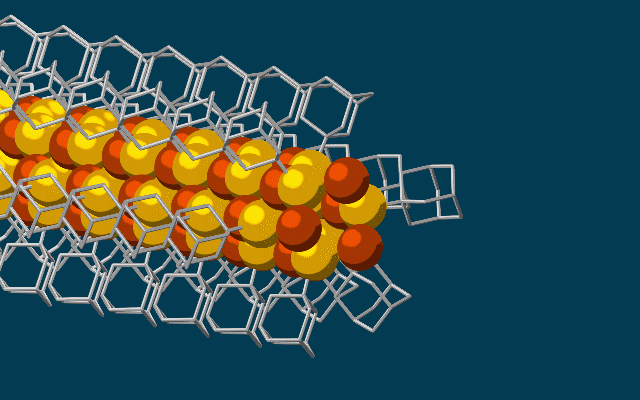Behold, the world’s thinnest electrical wire, which can measure down to mere three atoms wide! The feat has been accomplished by the scientists at Stanford University and the Department of Energy’s SLAC National Accelerator Laboratory, where they figured out the way to use diamondoids, the smallest possible pieces of diamonds, to create world’s thinnest electrical wire.
Nicholas Melosh, who was part of the study and hails from Stanford University said,
“Their minuscule size is important because a material that exists in just one or two dimensions – as atomic-scale dots, wires or sheets – can have very different, extraordinary properties compared to the same material made in bulk.”
Diamondoids work by attaching to sulphur and copper atoms and help in transmitting the electrons to induce current by creating cage-like structures from carbon and hydrogen bonds. These particles naturally occur in petroleum fluid, and due to their microscopic size, they have to be assembled on a nano-scale level like assembling a molecular LEGO.
Researcher Fei Hua Li commented on this,
“Much like LEGO blocks, they only fit together in certain ways that are determined by their size and shape.”
Hao Yan, another researcher from Stanford University, said,
“What we have shown here is that we can make tiny, conductive wires of the smallest possible size that essentially assemble themselves”.
The animation below shows the formation cycle of the diamondoid string.

“The process is a simple, one-pot synthesis. You dump the ingredients together and you can get results in half an hour. It’s almost as if the diamondoids know where they want to go.”
The diamondoids use the strong van der Waals forces to ensure that each diamondoid perfectly sticks to another and forms a long chain.
“The copper and sulphur atoms of each building block wound up in the middle, forming the conductive core of the wire, and the bulkier diamondoids wound up on the outside, forming the insulating shell.” said researcher Fei Hua Li.
Nano-wires have been around for quite some time now, but this one has been making all the headlines due to the incredible nano width.
A team member, Nicholas Melosh, told IEEE Spectrum.
“Other molecular self-assembly methods have been tried, yet balancing the delicate interplay between attractive and repulsive forces to get just the size you want has proven very difficult,”
He added,
“Achieving a ‘solid core’ of a three-atom cross section is ideal. It’s small enough to exhibit unique functionality, yet it can tolerate single defects or strains since there is still a pathway for the electrons to flow.”
These wire can make a breakthrough towards creating a host of such small technologies, and the researchers hope they can continue to improve the performance so that these can be integrated with other nanotechnology in the very near future.


